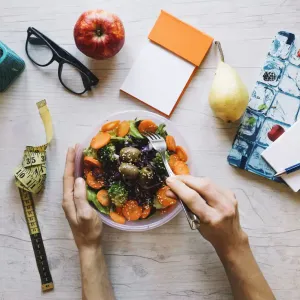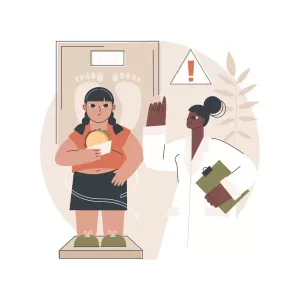

Our Review Process
Our articles undergo extensive medical review by board-certified practitioners to confirm that all factual inferences with respect to medical conditions, symptoms, treatments, and protocols are legitimate, canonical, and adhere to current guidelines and the latest discoveries. Read more.
Our Editorial Team
Shifa Fatima, MSc.
Author
Dr. Apoorva T, MHM.
MEDICAL ADVISOR
Is Rice Good For Diabetes?
Rice is a staple food in many cultures. But is rice good for diabetics? It might increase glucose levels in such individuals. Since it is a spike carb, the answer to “Can patients with diabetes eat rice?" Is a complicated one. Spiky carbohydrates are foods that cause glucose levels to increase quickly and can produce unpredictable fluctuations in glucose levels and does rice have sugar? The simplest method to keep your glucose levels consistent with such carbohydrates is to refrain from consuming them. This is true for most high-carb items, such as white bread, pasta, and cake. However, rice may be an important and even necessary component of many cultures' diets. Also know how to get freedom from diabetes?
Table of Contents
Can Diabetics Eat Rice?
As someone with diabetes, you need to know what’s good for your health and answers to questions like “Is rice good for people with diabetes?” or “Is puffed rice good for diabetes?” Both these questions are debatable, but for now, the need to understand is “Can people with diabetes eat rice?”
Rice is thought to raise blood sugar levels because it contains starch and carbohydrates. However, you are allowed to consume rice. But you must be thinking is it healthy to have rice for diabetics type 2? When you evaluate rice's nutritional composition, you can see why it must be an element of your diabetes diet chart. White and brown rice are high in carbohydrates, with little fat or sugar. Cooked rice has a lot of water, accounting for over 70% of its weight. The calorie, carbohydrate, protein, and fat composition of white and brown rice are similar:
| Nutrient | Amount | % Daily Value (DV) |
|---|---|---|
| Calories | 130 | - |
| Carbohydrate | 28.7 grams (g) | 10% |
| Protein | 2.36g | 5% |
| Fat | 0.19g | 0% |
Few people also have boiled rice without knowing, “Can diabetics eat boiled rice?” Rice consumption can result in increased glucose levels after a meal. In people without diabetes, insulin prevents blood sugar levels from rising too much.
But with diabetes, based on its type, the body does not produce insulin or is resistant to it. However, in such cases, you can still eat rice, provided you avoid consuming it in excess. You can reduce the amount of rice in each meal following the recommended dietary allowance and selecting the appropriate level of quality.
Thus, to answer the question “Is boiled rice good for diabetes?”, you can consider having parboiled brown rice as that is the healthiest option, followed by brown, basmati, semi-polished, and finally, polished white rice.
Whole grains must account for half of your grain consumption to prevent chronic illnesses. Replace white rice with brown/semi-polished rice for one meal per day. You must also consider lowering the Glycemic Index (GI) of your food to avoid spikes in your blood glucose. Rice should be eaten with low-GI foods (including vegetables, pulses/legumes, dense fibrous foods, and milk products) to reduce the overall GI of the meal. Also read about how to prevent diabetes

What Are Some Healthy Rice Options?
The following rice diet for diabetes can help you enjoy rice without compromising your health.
1. Brown Rice
This is whole-grain rice that has been removed from its outer protective shell, known as the hull. It still has the bran layer and the germ, which are high in nutrients. Is brown rice good for diabetics?
Brown rice is a good option for people with type 2 diabetes, as the consumption of this flavonoid-rich food is associated with a lower risk of chronic illnesses like heart disease. Furthermore, it is abundant in magnesium, a mineral necessary for regulating blood sugar and the metabolism of insulin. Also know more about diabetes diet chart
2. Black Rice
Moving forward, black rice has the strongest antioxidant properties among all rice varieties; thus, this rice is good for people with diabetes. Antioxidants are substances protecting cells from molecules called free radicals, which contribute to disease-causing oxidative stress. Chronic illnesses such as heart disease and mental deterioration have been linked to oxidative stress. Anthocyanins, a type of flavonoid plant pigments with potent antioxidant and anti-inflammatory properties, are abundant in black rice. Also know about Indian diabetes diet.
3. Red Rice
This kind contains more protein and fibre than white rice variants, but its antioxidant content is what shines through. It is high in flavonoid antioxidants like anthocyanins apigenin, myricetin, and quercetin, just like black rice. Red rice can resist free radicals better and has higher flavonoid antioxidants than brown rice. Flavonoids reduce inflammation in your body, keep free radical levels under control, and lower the risk of chronic illnesses, including heart disease.
Alternatives to Rice in Diabetes
1. Quinoa
This crop is farmed mainly for its delicious seeds. Because it is gluten-free, this rice substitute is perfect for gluten-intolerant persons. It is a highly absorbable protein source that is also high in anti-inflammatory monounsaturated and omega-3 fats.
2. Barley
This is one of the world's earliest cereals to be produced. Barley is higher in protein and fibre than white rice. Moreover, it is high in vital nutrients like vitamin B, iron, magnesium, and many other nutrients.
3. Cauliflower
Cauliflower rice is a popular rice substitute for those following a keto or low-carb diet. Cauliflower is a low-calorie vegetable, so this is an excellent diet-friendly rice substitute. It is also regarded as a superfood as it is high in nutrients.
4. Buckwheat
Incorporating buckwheat (kuttu ka atta) into your diet could be a safe, convenient, and cheap strategy to decrease glucose levels and lessen the risk of developing heart, nerve, and kidney diseases.

Bottomline
People with diabetes can have rice but in moderation. Rice is high in carbohydrates and low in fat. Antioxidant-rich brown, black, and red rice are most recommended. There are many rice alternatives for diabetics like buckwheat and barley. You can pair rice with low-GI foods to avoid blood sugar spikes.
FAQs
What is the GI score of rice?
GI score measures how different foods affect blood sugar levels. It is a scale from 0 to 100 that ranks food depending on its immediate influence on glucose levels. The items are evaluated in equivalent carbohydrate amounts and contrasted to a benchmark food such as glucose. The GI of rice varies from 48 to 92, with an average of 64. This also depends on the type of grain consumed. Since rice varieties have varying GI values, rice consumers can make informed decisions about the grain they want to consume.
Rice variations such as India's most extensively grown rice variety, Swarna, have a low GI, whereas Australian variants such as Doongara and Basmati have a medium GI. High-GI diets cause drastic fluctuations in blood sugar levels, increasing the risk of type 2 diabetes and making its management difficult. In contrast, low GI foods induce a steady rise in blood sugar, lowering the risks of getting diabetes.
Choosing one rice variety over another might be an easy approach to improving your nutrition. Whole-grain rice has bran that provides more specialised nutrients. Selecting whole-grain rice over white rice can improve your health by lowering your risk of type 2 diabetes, obesity, and heart disease.
References
- https://www.healthline.com/health/diabetes/diabetes-rice
Disclaimer
This website's content is provided only for educational reasons and is not meant to be a replacement for professional medical advice. Due to individual differences, the reader should contact their physician to decide whether the material is applicable to their case.








